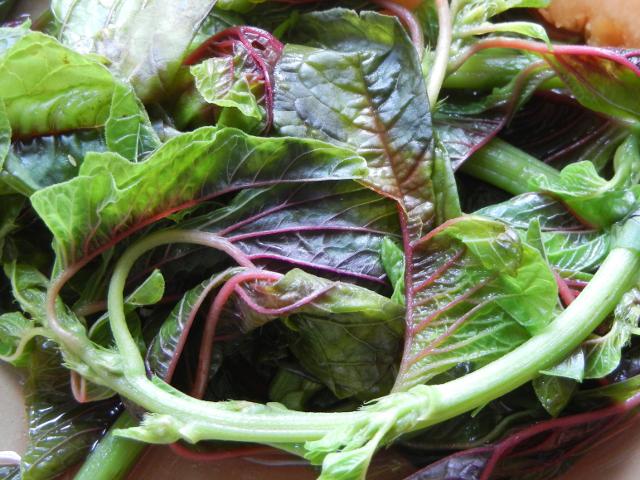Cooked Amaranth Leaves (Xian Cai) in album food
In Albums: food

Sep 7th, 2011, by Alex Zorach
This photo shows cooked amaranth leaves, shortly before I ate them. Amaranth is a somewhat esoteric plant in western countries, where it is best-known for its use as a grain, a distant cousin of quinoa. But amaranth is also usable as a cooked green (or red) vegetable. It is widely consumed in India, China, and other regions, especially in hot areas where it is a little too warm for Spinach and other greens widely consumed in Europe and the U.S. In China, Amaranth greens are called Xiancai (xiàncài, 莧菜 or 苋菜). I have also seen this term written yin tsai in other romanizations.
These particular amaranth leaves, as is common for ones consumed in China, had mostly green leaves and stems, but with red central veins to the stems.
As a vegetable, I found these leaves to have a very familiar taste. It was quite different from spinach and other cooked leafy greens, however...I found them to taste a lot like green beans or string beans, and also a little like beets and a little like asparagus. As with any cooked vegetable, the cooking time probably depends more on the size and age of the leaves and stems than the type of plant alone, but I found these to cook faster than collard greens and slower than swiss chard. They also produced a deep purplish-red broth which tasted a lot like the juice from beets.
I also wrote about this vegetable on my tea blog, in the post herbal infusions and cooked vegetable broth.